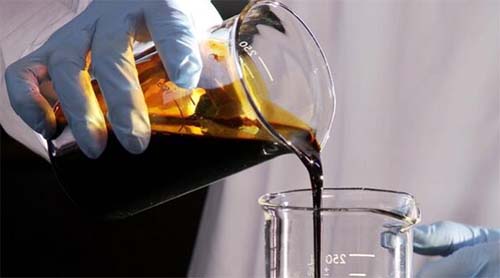Hydraulic oil contamination is a major cause of hydraulic system failure, so it is a serious problem for maintenance personnel everywhere. Hydraulic systems can be contaminated in many ways-including poor system design, lack of maintenance or improper maintenance procedures, and other factors. In this article, we will discuss 7 causes of hydraulic oil contamination that you may not have considered, and provide you with some information to help you keep your hydraulic system clean. This articleZhongyou Heavy IndustryBring the seven major causes of hydraulic oil pollution.

1) Hydraulic oil pollution caused by poor hydraulic system design.
The design of the hydraulic system plays an important role in ensuring that contamination is minimized. Factors such as incorrect valves, incorrect vent positions, insufficient filtration, insufficient wiper seals, and other design features may allow external debris to enter the system. In addition, if the design of the system does not allow for correct routine maintenance, this will also have an impact on the maintenance performed. For example, if the hydraulic oil tank is difficult to access or cannot be completely drained, it may not be possible to completely flush and replace the old hydraulic oil.
2) Hydraulic oil pollution caused by inferior hoses and accessories.
Unqualified hoses and fittings may increase contamination due to the use of inferior metals or materials. Depending on the industry and application, some accessories and components may not be able to withstand environmental conditions, which may lead to increased corrosion and the risk of pollution.
3) Component failure causes hydraulic fluid contamination.
Whenever a component fails, the increased friction and damage will introduce more metal particles, which will be generated as the component wears, which will increase the risk of contamination. Therefore, if you need to replace parts, check the hoses, lines, cylinders and valves for signs of wear and particles in the faulty unit. In addition, it is best to flush the entire system and add new filtered fluid when components need to be replaced.
4) Contamination of hydraulic oil when system components are replaced.
The new component itself may be a source of contamination. Some components are produced in factories with poor sanitary conditions, and contamination sometimes occurs during packaging, transportation or storage. Therefore, it is important to clean and prepare new system components before installing them on the system. In addition, the act of removing a component from the system and replacing it with another component is also an opportunity for debris and impurities to enter the system. Removing parts from a dirty machine is an open invitation for contamination to occur. Therefore, it is best to clean and prepare the system before removing the parts to be replaced to minimize the possibility of dust or debris entering the system.
5) hydraulic oil pollution when replacing or adding hydraulic oil.
Like the above points, whenever you open the hydraulic system to replace the hydraulic oil, this is another opportunity for contaminants to enter the interior, and they can cause serious damage. Therefore, it is important to follow careful cleaning procedures when performing this task. In addition, it is important to properly flush the old liquid in the system before introducing new cleaning liquid. Otherwise, it will cause the new fluid to mix with the old contaminated oil.
6) Dirty respirator causes hydraulic oil contamination.
Breathing is an obvious entrance to pollution. If the environment contains airborne particles, a faulty respirator may allow these particles to enter the hydraulic system. Therefore, as part of the daily maintenance plan, attention should be paid to replacing dirty and clogged respirators
7) hydraulic oil contamination caused by damaged or worn cylinder seals.
Hydraulic cylinder seals are particularly susceptible to damage and become an important aspect of contamination. Many earth-moving machines operate in all weather conditions and in muddy, dirty environments, which means that their cylinder seals are under constant threat. Over time, the cylinder seal may become hard and brittle and lose its effectiveness in preventing the ingress of contaminants. The contaminated fluid then migrates into the machine and causes longer-term, more expensive damage. Therefore, you should always carry out a hydraulic cylinder overhaul regularly to protect the overall health of the hydraulic press.
Hydraulic oil always has the risk of contamination, and sometimes these risks are not as obvious as they seem. In order to reduce maintenance costs and downtime, you must pay attention to all possible pollution points so that you can reduce pollution levels and get more benefits from the fluid. Of course, to ensure long-term reliability and performance, proper proactive maintenance is the best practice.
Zhongyou Heavy Hydraulic Technology Advantage]
Zhongyou Heavy Industry in strict accordance with the ISO international standard quality management system and 5S management standards for quality control and internal management. The "Henan Province Fluid Pressure Forming Intelligent Equipment Engineering Technology Research Center" has been established. The core team is composed of dozens of doctors, masters and metal forming experts and professors from various colleges and universities, focusing on the research and development of hydraulic forming core technology and product process.
Zhongyou Heavy Industry has carried out long-term production, learning, and research cooperation with the Institute of Metals of the Chinese Academy of Sciences, Nanjing University of Aeronautics and Astronautics, and jointly established a "Hydroforming Technology Industrialization Demonstration Base" to track domestic and foreign technologies and continuously improve "Zhongyou Heavy Industry" hydraulic equipment brand value.










